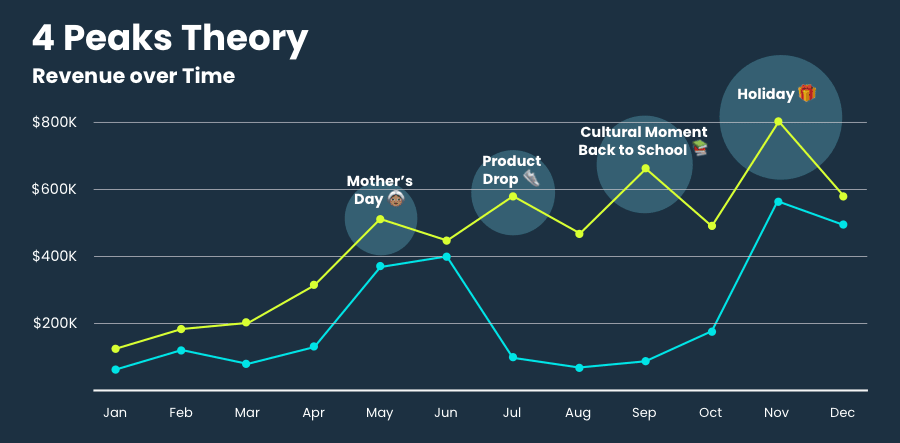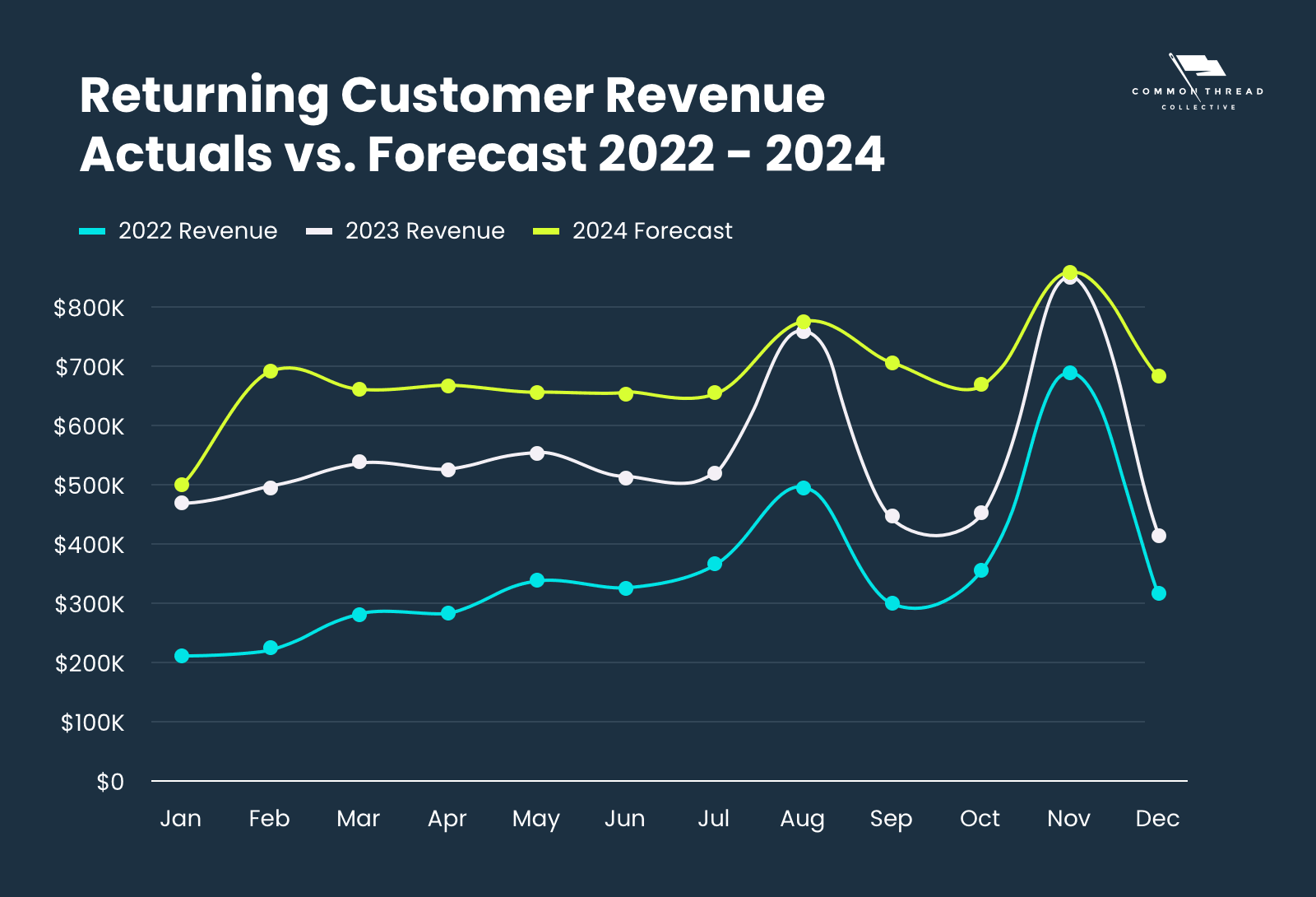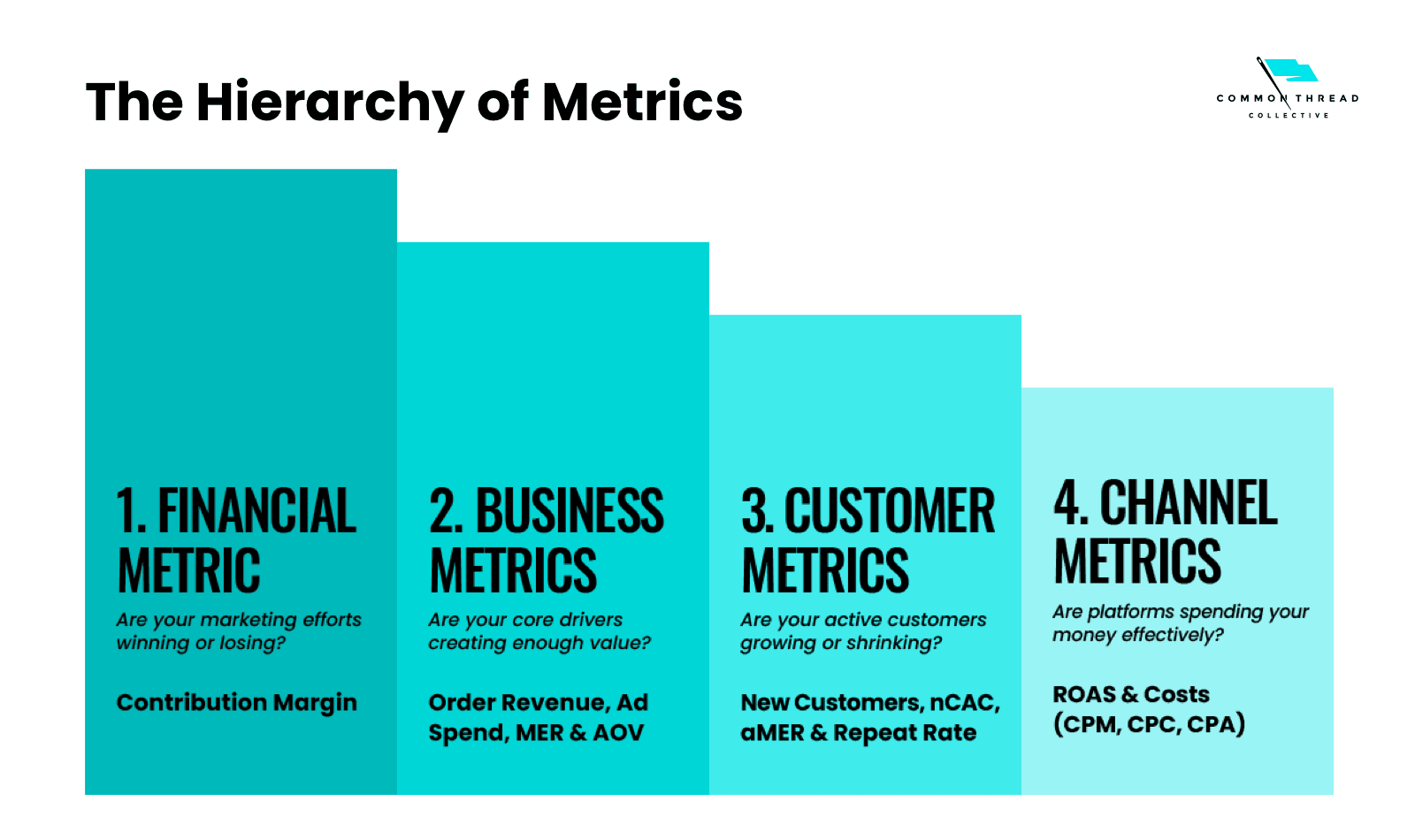Implement the Prophit System for Your Brand
We’ll work with you to custom-build CTC’s predictable, profitable growth system for your ecommerce business.
Get Started
It’s time for marketers to step into the driver's seat and own the forecast.
This isn't about receiving a forecast from finance. No one else in the organization is in a better position to deliver an accurate forecast than you … the marketing leader should be determining the expectations of the business.
Owning the forecast will make you an invaluable asset to your business and drive alignment cross-functionally.
In an era where businesses crave predictable, profitable growth, the forecast becomes a guiding light. It's the tool that helps you navigate the murky waters of market volatility and drive stability within your organization.
Before we dive into the specifics, let me share a little secret …
All models are wrong, but some are useful.
So, as we embark on this journey, let's remember: the goal isn't to be exactly right; it's to be useful.
To be useful, let's focus on creating a model that guides our decisions, and helps us quickly identify where we might be importantly wrong. We need a model that creates a close approximation of a future reality. (For us that means plus or minus 10% to target.) A great model also allows us to quickly identify where you are importantly wrong, and course correct.
Accurate forecasting is an exercise in execution just as much as it is in modeling.
That is why marketers are uniquely primed to be great at planning and forecasting. You control the creation of the revenue.
Revenue doesn’t just show up in the spreadsheet. It shows up because we made it show up.
With that in mind, let's explore a four-step process to craft a forecast that you, as a marketing leader, can confidently own.

This blog post is another in our “Bridges” series … bridging the gap between marketing and finance.
In previous installments of this series, we’ve focused heavily on your business’ profit and loss statement (P&L), so for detailed recommendations to fix your P&L, check out episodes 1-4.
Understanding the financial components of a business has become vital for marketers, and we aim to bridge the gap between marketing and finance with this series.
Before we delve into numbers and algorithms, we need to start with the basics: qualitative planning.
This is where your marketing prowess truly shines. You are the architect of revenue creation, the mastermind behind product launches, promotions, campaigns, and stories that resonate with your audience.
The marketing calendar becomes your canvas, where you design peaks and valleys that drive revenue.
Remember, your actions aren't linear; they're strategic.
You create moments that transcend the ordinary, whether it's a holiday promotion or a product launch. And these moments aren't just flukes; they're planned, deliberate, and critical to your forecast.
Year-round growth comes from a calendar with at least four peaks.

At Common Thread Collective, we’ve talked a long time about the ‘Four‑Peaks’ Theory. Most marketing calendars and revenue plots for ecommerce businesses follow two peaks: Father’s or Mother’s Day, and Black Friday/Cyber Monday.
With the Four-Peaks model, you take advantage of the traditional holiday season, major gifting celebrations, and cultural moments (i.e. Earth Day, April Fool’s Day, or International Coffee Day) as well as product events.
You get a calendar that drives performance through storytelling and imperative purchase opportunities.
Let’s take a look at a real ecommerce brand's year-over-year revenue and planning.
Below, we have a sample revenue and forecast using our own brand, Bambu Earth. Their revenue graph tells a story of peaks and valleys, each representing a carefully orchestrated marketing campaign or promotion.

That August spike in returning customer revenue? It's not a coincidence; it's the result of a well-executed marketing promotion.
So, as a marketing leader, your qualitative planning sets the stage for a robust forecast. You're not just predicting; you're shaping the future with your marketing calendar.
Now, let's talk numbers.
Quantitative modeling is where we bring our qualitative plans to life. It's about turning historical data into a roadmap for the future. But remember, we're not just modeling for the sake of it …
We're modeling with purpose.
To do that you need to measure what matters. That means defining a clear hierarchy of metrics that you want to model for.

At the top of our model lies contribution margin. This is your net sales minus total cost of delivery and ad spend. It's the metric that ties your marketing efforts to the bottom line.
But to get there, we need to understand the relationships between our inputs and outputs.
This is where we introduce the concept of customer metrics. How do LTV, new customer CAC, repeat purchase rate, and first-order profitability impact your forecast? These metrics give you insights into your existing customer base and the potential of your new customers.
But it doesn't stop there.
We also need to factor in-platform, channel-level metrics. This is where we look at the performance of each marketing channel and its impact on your forecast. It's about understanding the nuances of each platform and optimizing your spending for maximum returns.
To build a useful model, you need three critical inputs.
With the model in place, it's time to build a map.
To build something that works both for marketers and the business at large, we want to create a document that includes …
This map becomes our guiding light, our North Star in the ever-changing landscape of marketing. It's not just about plotting a course; it's about tracking and adjusting as we go.
We call this process plot, pivot, profit.
It's a mantra that reminds us to stay agile, to pivot when needed, and to always keep our eyes on the prize. Because in marketing, the only constant is change. And it's your ability to adapt and pivot that will set you apart as a marketing leader.
Finally, we come to the last step: walking the journey.
Take your yearly, and monthly predictions, then break those down even further into daily expectations. Many businesses see a ‘day-of-the-week effect” where specific days tend to perform better or worse across the average.
Your ecommerce business might see performance changes on specific days as a result of email or SMS sends, promotional or product launches, or simply due to consumer behavior, and your business needs to forecast accordingly for those variations.
You need to be able to take these forecasts, understand where they are importantly wrong, and pivot as necessary.
The quicker you become problem-aware, the more likely you are to solve the problem.
This is where your leadership skills truly shine. It's about rallying your team, keeping them focused on the goal, and celebrating the wins along the way.
But it's also about being the voice of reason, the guiding hand that steers the ship through turbulent waters. Because your organization doesn’t succeed based on the accuracy of your forecast. Your success will be based on how quickly you can find the problems that will inevitably exist in your forecast, and how quickly you can course correct.
Let’s be less right, and be more useful.

We’ll work with you to custom-build CTC’s predictable, profitable growth system for your ecommerce business.
Get StartedCommon Thread Collective is the leading source of strategy and insight serving DTC ecommerce businesses. From agency services to educational resources for eccomerce leaders and marketers, CTC is committed to helping you do your job better.
For more content like this, sign up for our newsletter, listen to our podcast, or follow us on YouTube or Twitter.